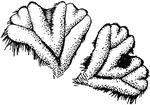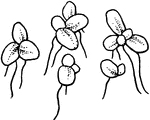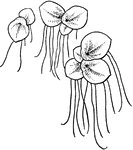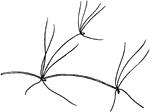
Pithecheirus Melanurus
"This includes one animal, the P. melanurus, which has puzzled the naturalists, inasmuch as…
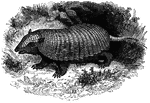
Giant Tatou
"In this carapace covers the body above and low down on the sides, but leaves the belly unprotected;…
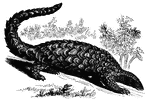
Indian Pangolin
"Its head is small, pointed, and conic; muzzle elongated and narrow; body rather stout; tail short and…

Gnu
"The Gnu has a formidable pair of horns, leading first downward and then pulling upward, and has been…

Battle of Belmont
"Battle of Belmont, Mo., opposite Columbus, Ky, November 7th, 1861- Federal forces commanded by U. S.…
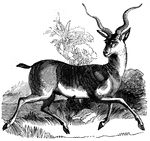
Common Antelope
"Its length is four feet; its height two and a half; the legs are long and delicate; the body round,…
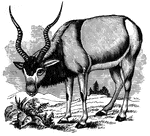
Addax
"The body is five feet long, and height three feet. The general color is gray-ish-white, though the…
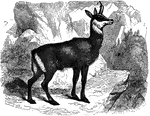
Chamois
"The horns are six or seven inches long, the body about three feet three inches, and the height at the…

Common Sparrow of Europe
Often found among human settlement, the common sparrow of Europe's diet consists of seeds, insects,…
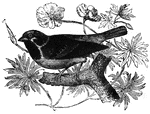
Wood Sparrow
Somewhat aloof from human habitiation, the wood-sparrow can often be seen mingline with other sparrow…
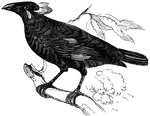
Mino
Found in Java and Sumatra, the mino-bird posses a remarkable ability to replicate human speech.
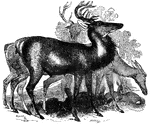
Male American Deer
"It is about the size of the European fallow-deer, and resmebles it in temper and character; the color…
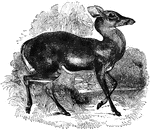
Female American Deer
"It is about the size of the European fallow-deer, and resmebles it in temper and character; the color…
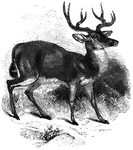
Mule Deer
"Is between the common deer and the American elk in size. Its horns are round and twice forked; the…
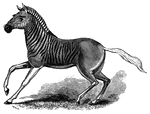
Quagga
"Its general color is brown, the head, neck, and withers striped or zebraed wth blackish-brown; the…
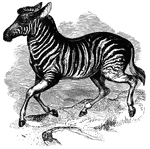
Dauw
"Is of a pale brown color; the underside of the body being whitish; head, body, and upper part of the…
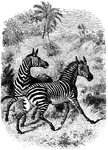
Zebras
"The ground color is white, or yellowish white, but the head, body, and legs to the hoofs are regularly…
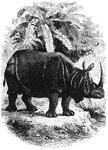
Indian Rhinoceros
"The head and neck are rather short; the eye is small and lateral, and the snimal cannot see in front,…
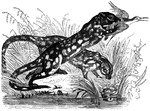
Spotted Martin
"Is eighteen inches long, with a tail nearly as long as the body; its fur is chestnut-color, spotted…
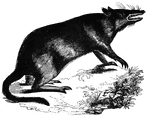
Long Nosed Bandicoot
"Having a long head, with the upper part of the snout much prolonged: the tail is long and tapering;…
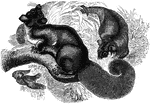
Sugar Squirrel
"It is about as large as our red squirrel; the tail rather longer than the body; the fur soft and beautiful;…
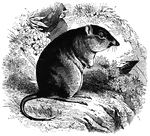
Potoroo Rat
"Is a mild, timid creature, of the size of a rabbit; the body is formed somewhat like that of a rat,…
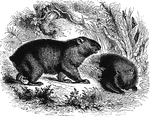
Wombat
"A short-legged, thickset animal, the body two feet long, the tail half an inch long. It lives in burrows…

Roger's Rock
Roger's Rock. This sketch is from the lake, a little south of Cook's Point, seen just over the boat…
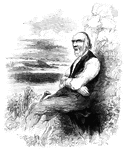
Isaac Rice
Isaac Rice was the name of our octegenarian guide. Like scores of those who fought our battles for freedom,…

Parakeet Macaw
Native to South America, the parakeet macaw is renowned for its powers to imitate human speech.

Glass-snake
Found in the woods of the Southern States, the glass-snake has the head of a lizard, but the body resembles…
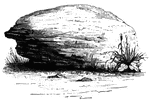
Brant's Rock
Brant's Rock. This rock, which is about four feet high, lies in a field on the left of the road leading…

Wolffiella
Plants floating just below water surfacel plant body made up of a clump of short filaments.

Seabury's Monument
"Bishop Seabury's Monument. The following is the inscription upon the slab: 'Here lieth the body of…

White Shark
"Has the body elongated, swims with great ease, measures from fifteen to twenty feet, is extremely voracious,…

Thresher Shark
"Is twelve to eighteen feet long, the tail nearly as long as the body; it uses this member for attacking…

Hammerhead Shark
"Having a body like other sharks, but with a double snout like a double-headed hammer, and having an…
Sturgeon
"These have an elongated body, and a funnel-shaped and protrusible mouth, without teeth, places on the…

Pipefish
"Have a long, eel-like body, with the jaws united forming a tube nearly cylindrical. The eggs of the…
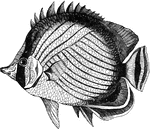
Wandering Chaetodon
"Twelve inches long, body of a pale yellow color, with numerous oblique, brownish-purple lines. Inhabits…

European Blackfish
"Two to three feet long, remarkable for its swiftness and voracity; the color is black, the body covered…

Spotted Gunnel
"Or butter-fish, so called on account of the mucous secretion with which its sides are covered; it is…

Flying Fish
"Is twelve to fourteen inches long, and has the ventral fins placed anterior to the middle part of the…
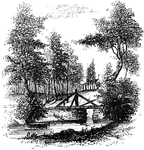
Sleepy Hollow
"Bridge over Sleepy Hollow Creek. Ichabod, according to Irving, in the Legend, returning from…
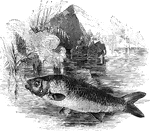
Carp
"They are distinguished by a small mouth and powerful teeth, though not set in the jaws. The body is…
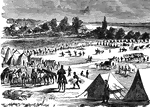
Camp Zagonyi
"Camp Zagonyi, encampment of Fremont's army on the prairie, near Wheatland, Mo., October 14th, 1861.…
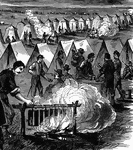
Camp Zagonyi
"Camp Zagonyi, encampment of Fremont's army on the prairie, near Wheatland, Mo., October 14th, 1861.…
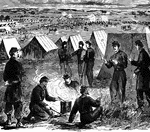
Camp Zagonyi
"Camp Zagonyi, encampment of Fremont's army on the prairie, near Wheatland, Mo., October 14th, 1861.…
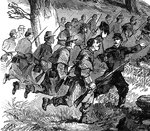
Battle of Mill Spring
"Battle of Mill Spring, on the Cumberland River, near Jamestown, between a confederate force, 8,000…
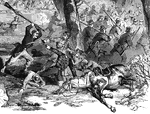
Battle of Mill Spring
"Battle of Mill Spring, on the Cumberland River, near Jamestown, between a confederate force, 8,000…
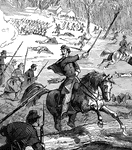
Battle of Mill Spring
"Battle of Mill Spring, on the Cumberland River, near Jamestown, between a confederate force, 8,000…
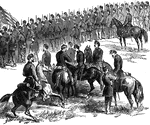
Battle of Malvern Hill
"Battle of Malvern Hill, near Turkey Bend, James River, Va., fought Tuesday, July 1st, 1862. The battle…

Battle of Malvern Hill
"Battle of Malvern Hill, near Turkey Bend, James River, Va., fought Tuesday, July 1st, 1862. The battle…
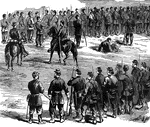
Battle of Malvern Hill
"Battle of Malvern Hill, near Turkey Bend, James River, Va., fought Tuesday, July 1st, 1862. The battle…
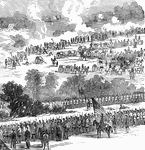
Battle of Malvern Hill
"Battle of Malvern Hill, near Turkey Bend, James River, Va., fought Tuesday, July 1st, 1862. The battle…
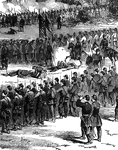
Battle of Malvern Hill
"Battle of Malvern Hill, near Turkey Bend, James River, Va., fought Tuesday, July 1st, 1862. The battle…


